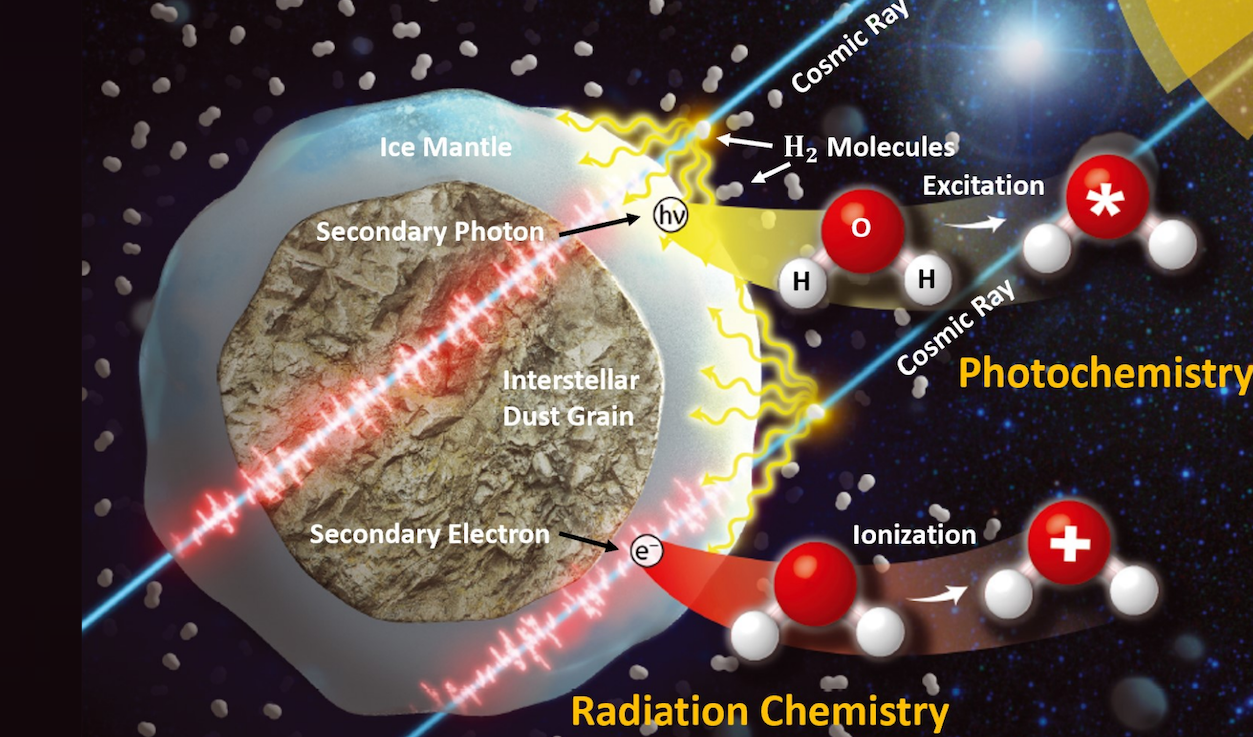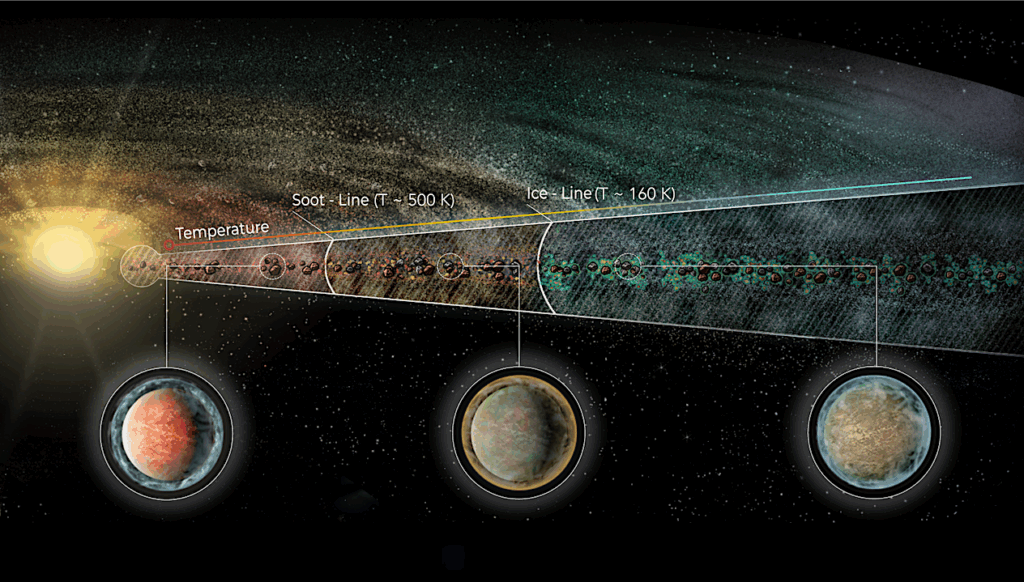The Role of Low-energy (< 20 eV) Secondary Electrons in the Extraterrestrial Synthesis of Prebiotic Molecules

We demonstrate for the first time that Galactic cosmic rays with energies as high as 1e10 eV can trigger a cascade of low-energy (< 20 eV) secondary electrons that could be a significant contributor to the interstellar synthesis of prebiotic molecules whose delivery by comets, meteorites, and interplanetary dust particles may have kick-started life on Earth.
We explore the relative importance of low-energy (< 20 eV) secondary electrons–agents of radiation chemistry–and low-energy (< 10 eV), non-ionizing photons–instigators of photochemistry. Our calculations indicate fluxes of 100 electrons/cm2/s for low-energy secondary electrons produced within interstellar ices due to incident attenuated Galactic cosmic-ray (CR) protons. Consequently, in certain star-forming regions where internal high-energy radiation sources produce ionization rates that are observed to be a thousand times greater than the typical interstellar Galactic ionization rate, the flux of low-energy secondary electrons should far exceed that of non-ionizing photons.
Because reaction cross-sections can be several orders of magnitude larger for electrons than for photons, even in the absence of such enhancement our calculations indicate that secondary low-energy electrons are at least as significant as low-energy (< 10 eV) non-ionizing photons in the interstellar synthesis of prebiotic molecules. Most importantly, our results demonstrate the pressing need for explicitly incorporating low-energy electrons in current and future astrochemical simulations of cosmic ices.
Such models are critically important for interpreting James Webb Space Telescope infrared measurements, which are currently being used to probe the origins of life by studying complex organic molecules found in ices near star-forming regions.
Qin Tong Wu, Hannah Anderson, Aurland K. Watkins, Devyani Arora, Kennedy Barnes, Marco Padovani, Christopher N. Shingledecker, Christopher R. Arumainayagam, James B. R. Battat
Comments: 14 pages, 6 figures
Subjects: High Energy Astrophysical Phenomena (astro-ph.HE); Solar and Stellar Astrophysics (astro-ph.SR)
Cite as: arXiv:2312.02180 [astro-ph.HE] (or arXiv:2312.02180v1 [astro-ph.HE] for this version)
https://doi.org/10.48550/arXiv.2312.02180
Focus to learn more
Submission history
From: James Battat
[v1] Wed, 29 Nov 2023 02:58:55 UTC (663 KB)
https://arxiv.org/abs/2312.02180
Astrobiology








